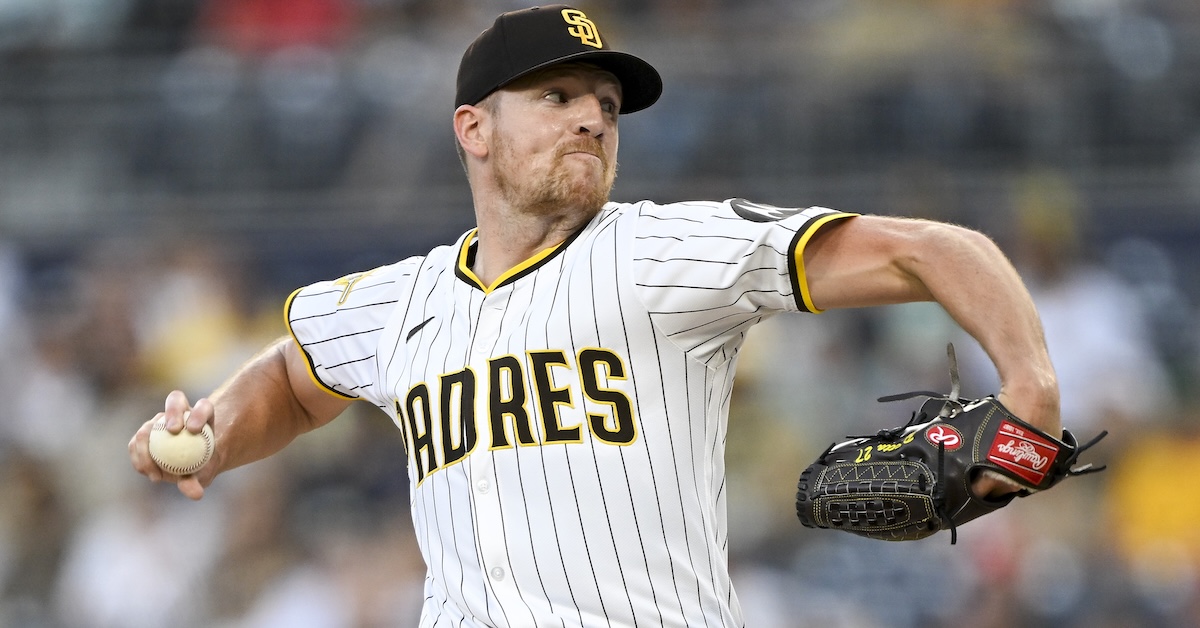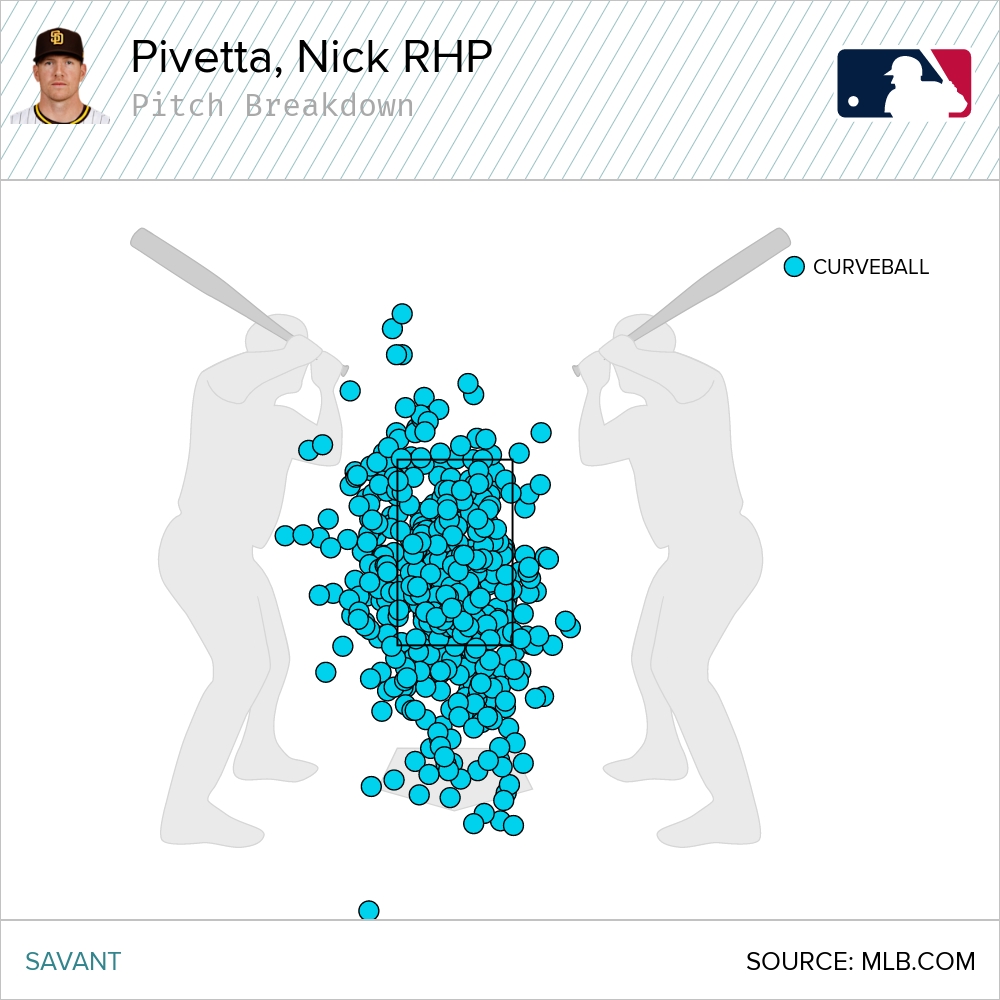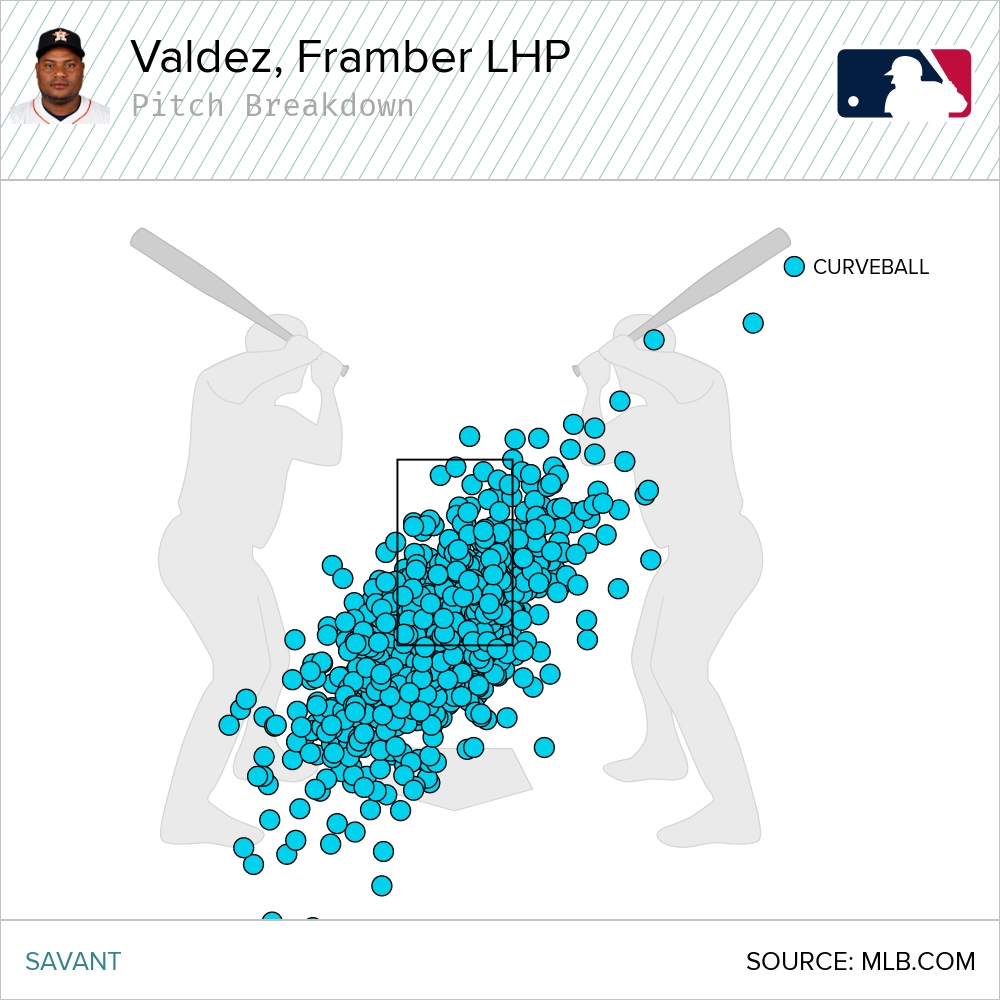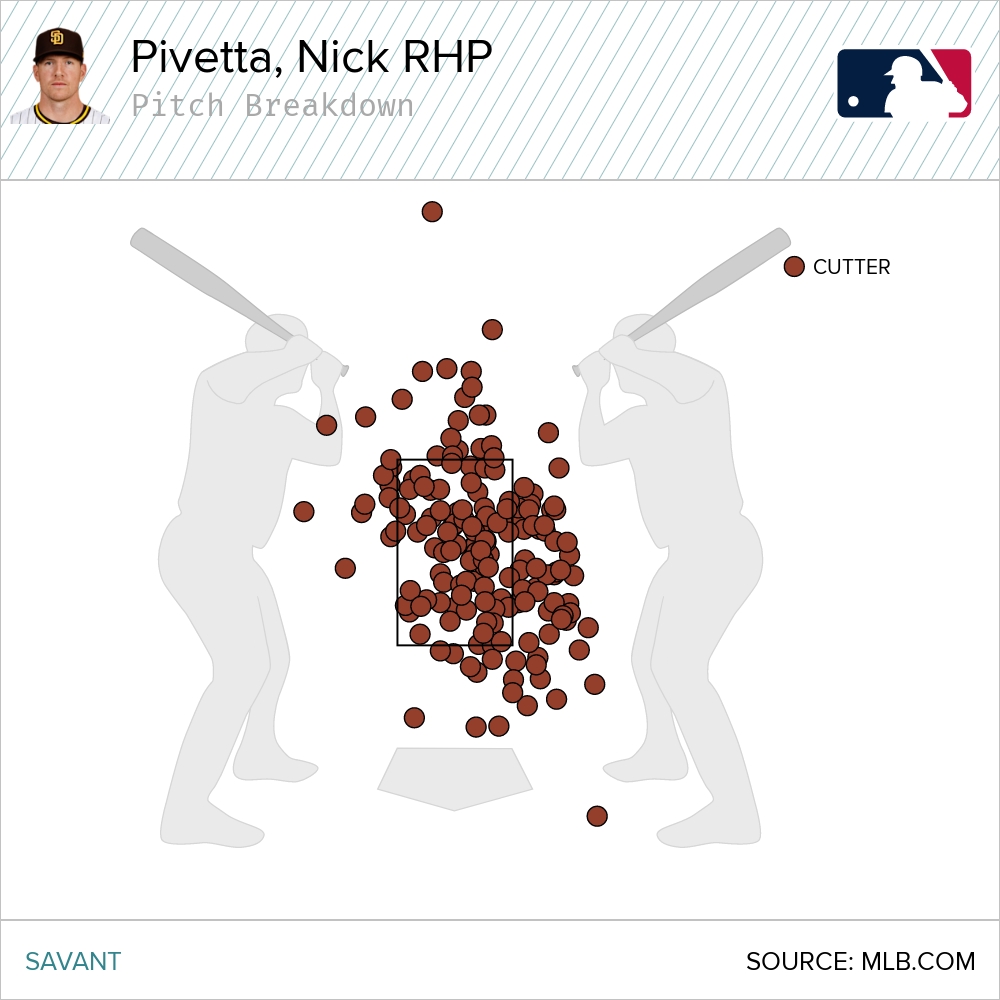
Right here’s Nick Pivetta’s signature pitch:

Or perhaps it’s this one, full with a skip-off:

OK, the person simply likes skipping:

You would possibly surprise why all of his signature pitches are tossed down the center for known as strikeouts. That’s as a result of Pivetta is the league chief in a statistic I didn’t know I cherished till I seemed it up: known as strikeouts on pitches proper down the pipe. He’s the 2025 chief. He’s the chief over the previous 5 years, in actual fact. Preserve your reality-distorting sweepers and letter-high four-seamers; Pivetta will get the job accomplished extra merely.
This seems like an unattainable talent to domesticate. You hear on a regular basis about pitchers going right into a lab someplace and including velocity or spin. New pitches? They’re a dime a dozen lately. A starter who hasn’t added a sweeper and cutter stands out like a sore thumb now that know-how and coaching make it simpler than ever to department out. Yearly, the sliders get slidier, the curveballs get curvier, and the fastballs get quicker. In the meantime, Pivetta throws 94-mph “heaters” down the center for strike three. How??
A few of it’s simply audacity. Take that first strikeout, a grooved cutter to a man with 99th-percentile bat velocity. Jordan Walker chases an excessive amount of and doesn’t make sufficient contact when he swings. Nobody of their proper thoughts would throw him a fastball down the center in an 0-2 depend. He’s seen 89 0-2 pitches this 12 months; 5 of them have been fastballs over the center of the plate. You may forgive him for not anticipating the problem.
A few of it’s sequencing. Let’s keep on with that Walker strikeout. Of their first assembly of the sport, Pivetta pounded Walker with breaking balls away, 4 out of the six pitches within the at-bat. Of their second assembly, Pivetta hung a sweeper up and away, however Walker hit it into the bottom for an out. The matchup appeared to largely be about Pivetta’s spin in opposition to Walker’s means to put off it.
To begin our fateful at-bat, Pivetta threw Walker two four-seam fastballs, each excessive and on the inside half. Walker’s an enormous league hitter; he can put two and two collectively and anticipate a diving sweeper. After which Pivetta broke out the spin! Nevertheless it was a cutter, which mimics slider spin however stays true in its flight path as an alternative of breaking and diving. Walker held himself again like he was attempting his hardest to not swing over a pitch within the grime – however the pitch was down the pipe. Checkmate.
All of Pivetta’s known as strikeouts have equally believable explanations. Jose Herrera acquired a gradual dose of low curveballs early, so he didn’t anticipate a excessive curveball late. Jon Berti was eager about the surface nook as a result of Pivetta had been attacking him there, so he too laid off anticipating one thing flexible. You may undergo all of Pivetta’s 22 (twenty two!) known as strikeouts on middle-middle pitches this season and discover some type of narrative.
After all, I may make these narratives up about nearly any sequence. There are such a lot of counterfactuals and Princess Bride-style ranges of pondering that just about any order of pitches may theoretically result in a batter getting locked up in a two-strike depend. Three straight fastballs? Certainly, he’d by no means throw a fourth. Three straight fastballs? Clearly, the development is your good friend, and one other one is coming. I’m not even certain which of these is extra compelling, which speaks to the issue of explaining by way of storytelling.
Extra related, then, is what broad expertise assist Pivetta accomplish this sleight of hand. Numerous pitchers combine up their choices and play one off of the others. Numerous pitchers have the identical fastball/slider/curveball/cutter combine. He doesn’t throw within the zone significantly typically or significantly not often. His pitches aren’t noteworthy on the subject of maintaining opposing bats on shoulders; his chase and in-zone swing charges are near league common. Opponents make contact at a mean charge after they swing. The broad aggregates make Pivetta appear unremarkable, however he’s clearly doing one thing to bewilder opposing batters.
One Pivetta benefit: He’s extra daring than opposing hitters can probably think about. Out of 126 pitchers with sizable beginning workloads, Pivetta is eighth in heart-of-the-plate charge in two-strike counts, within the 94th percentile. In different phrases, he’s throwing it down the center in unlikely conditions greater than nearly anybody else. In each depend that doesn’t function two strikes, Pivetta is lots nearer to common, with a 67th-percentile heart-zone charge.
That backwards strategy is certainly making Pivetta’s stuff play up. You may advance scout all you need, produce packet after packet that claims “be careful for this man sneaking you a fastball whenever you least anticipate it.” That’s all effectively and good, however hitters have spent hundreds of hours telling themselves to not fall for breaking balls in two-strike counts. They’ve spent hundreds of hours swinging over these silly breaking balls in these silly two-strike counts and ending up with strikeouts for his or her troubles. They’ve advised themselves “don’t chase, don’t chase, please please don’t chase” underneath their breath. And you then meet a man lobbing them down the center and your thoughts scrambles.
To be truthful, it’s not like half of Pivetta’s two-strike counts finish with him meatballing his strategy to a strikeout. He’s thrown 683 pitches in two-strike counts to rack up these 22 meatball known as strikeouts. When he ventures over the center of the plate with two strikes, batters normally swing; 87.4% of the time, to be exact. However that’s decrease than the league common swing charge in that state of affairs (93%). The truth is, Pivetta’s mark is sort of the bottom in baseball. Solely two out of the 114 pitchers who’ve tossed at the very least 100 middle-middle pitches in two-strike counts are drawing swings much less steadily.
That sounds counterintuitive. Even weirder, the fellows who draw swings much less typically than he does additionally prefer to flood the zone after they attain two-strike counts. My guess? It’s a range impact. Pitchers with the requisite sequencing, strategy, stuff, and deception to make batters short-circuit and watch strikes fly by naturally throw extra of those pitches. Why would they do the rest? It really works!
One prerequisite for making this work: the power to maneuver your whole pitches across the plate. If you happen to’re bouncing your curveball each single time, that makes the opposing hitter’s job lots simpler. Likewise, in case you solely work low within the zone along with your fastball, the batter will have the ability to eradicate potential choices and react to your low heater extra shortly. Pivetta throws no matter he desires, wherever he desires. Check out the situation of the 500ish curveballs he’s thrown this 12 months:

The easiest way to explain that form is “blob-like.” There’s no clear middle of mass, no clear path he’s spinning the curveballs alongside. There’s an enormous cluster up on the prime of the zone, one other within the center, and loads of pitches bounced. He hits each space of the zone, and misses off every of the perimeters considerably symmetrically. The ball may find yourself wherever, in different phrases. Evaluate that to Framber Valdez, proprietor of among the best curveballs there’s:

Valdez’s curve follows a sample. He has it on a string, dotting the low nook with frequency, and when he misses with it, he usually does so alongside that very same axis. From his lefty arm slot, you possibly can consider his curveball as following a constant path homeward with occasional alterations. Valdez’s curveball is healthier than Pivetta’s, whether or not you’re a pitch mannequin, precise outcomes, and even the attention check. However Pivetta’s is extra unpredictable, and sure, he attracts dangerous takes with it extra typically than Valdez attracts dangerous takes together with his.
All of Pivetta’s pitches are like that. Few pitchers throw extra excessive sweepers than he does, as a result of he strikes his goal round as an alternative of aiming low and glove aspect. He makes use of his four-seamer everywhere in the zone. Not that he throws a ton of cutters, however when he does, you guessed it, it appears like a Rorschach check:

I’ve shied away from telling you ways effectively Pivetta does general on these grooved pitches with two strikes. Sure, he throws them lots. Sure, he racks up a ton of known as strikeouts because of this. However is the trade-off good? Batters solely swing at 87% of those pitches, however 87% is lots! Then again, 22 known as strikeouts is lots, too. It’s a tricky query. Suppose it over. When you do, right here’s Dominic Smith taking two pipe-shot fastballs:

The reply: It’s extremely efficient! All of his heart-zone pitches in two-strike counts, those that draw takes and those that draw swings, have added as much as 11 runs of worth this season. In different phrases, the outcomes he’s gotten from them have prevented 11 runs relative to what a mean pitcher would have given up in these conditions. That’s tied for the most effective mark within the majors with Max Fried, himself a connoisseur of sudden strike zone assaults. He’s been six runs above common per 100 such choices, a totally unsustainable charge. Nobody’s six runs above common per 100 pitches in the long term – take into consideration what number of runs the common pitcher permits per 100 pitches and also you’ll perceive why in a short time.
The truth is, Pivetta is likely one of the best two-strike pitchers, interval. Listed here are the ten best pitchers on the subject of limiting offense in two-strike counts:
Greatest Pitchers in Two-Strike Counts, 2025
This season, 329 completely different pitchers have thrown 200 or extra pitches in two-strike counts. Nick Pivetta is the eighth best, and a lot of the guys forward of him are relievers pumping 100-mph fastballs for an inning at a time. (Trevor Rogers is nice: Famous.). Pivetta’s technique isn’t some novelty. It’s some of the efficient within the main leagues. And it’s “throw pitches within the best place to hit them within the counts the place there’s the least purpose to throw them there.” Fairly pleasant.
















